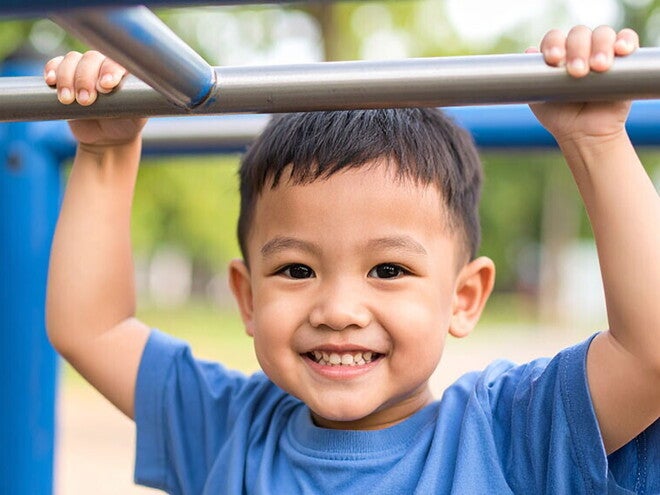
How Can You Support Your Child’s Physical Growth and Movement Milestones?

Source: AI-generated image, 2025. Created for Wyeth Philippines’ Bonakid Pre-School® 3+
As your child grows, their body is constantly changing—getting stronger, more coordinated, and ready for new physical adventures. Around age 4, they’re not just growing taller,they’re developing the skills and confidence to move with purpose. This is a key stage in your child’s physical development, and you play an important role in supporting it every day.
Celebrate Milestones in Movement
You may notice your child running faster, jumping higher, or catching a ball with surprising skill. These are all signs that their gross motor skills are advancing. They may also start mastering fine motor skills like holding a crayon correctly, unbuttoning clothes, or pouring their own drink with some supervision. Each of these skills supports greater independence and physical confidence.
Here are a few movement milestones many children around age 4 are working on:
- Catching a large ball most of the time
- Climbing stairs with alternating feet
- Pouring water or serving food with help
How You Can Support Their Physical Growth
1. Fuel Their Bodies with the Right Nutrition
Nutrients like Calcium, Lysine, Vitamin D, Vitamin C, and Zinc are essential for supporting your child’s growing muscles, bones, and immune system:
- Calcium helps build strong bones and teeth—critical for all their active play.
- Lysine supports muscle repair and helps the body absorb calcium for better bone strength.
- Vitamin D aids calcium absorption and contributes to a strong immune system.
- Vitamin C helps protect the immune system and supports tissue repair.
- Zinc plays a role in cell growth and muscle development.
Serve meals that are colorful, balanced, and nutrient-rich, and try to eat together when possible. Kids are more likely to try healthy foods when they see you enjoying them.
2. Encourage Active Play Every Day
Kids learn through movement! Give them safe spaces and opportunities to run, jump, dance, and climb. Parks, playgroups, and open play areas are ideal for encouraging physical activity and social development.
You can also bring movement indoors:
- Play music and have a dance party
- Create a simple obstacle course using pillows or boxes
- Role play active scenes (e.g., pretending to be animals or superheroes)
3. Promote Fine Motor Skills Through Fun Tasks
Let your child help with simple activities like:
- Collecting and sorting rocks or leaves
- Playground climbing and gripping bars
- Pouring their own water (with help)
- Using child-safe scissors or helping unbutton clothes
These small actions develop hand-eye coordination and muscle control.
4. Set Healthy Routines to Support Growth
Physical development depends on more than just movement—it’s also about rest and structure.
- Aim for 10 to 13 hours of sleep per day (including naps)
- Create a calming bedtime routine with no screen time 1–2 hours before bed
- Keep screen devices out of the bedroom
5. Be an Active Role Model
Children imitate what they see. Be a movement role model by staying active with them. Take walks, play together, or join in their pretend play. Let them see you stretching, dancing, or doing chores that involve movement.
6. Cheer Them On
Your encouragement matters. Celebrate small wins—like learning to hop or catching a ball—by saying things like “Wow, look how far you jumped!” or “Great catch!” Positive words build confidence and a love for movement.
Your Support Makes All the Difference
By nourishing their body with healthy foods, creating movement-rich routines, and celebrating their physical milestones, you’re helping your child grow strong, capable, and to become confident Batang may Laban. Physical development during these early years lays the foundation for a healthy, active life—so embrace every step, skip, and jump along the way!









